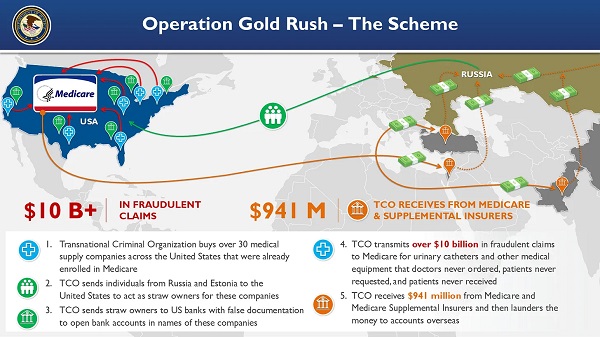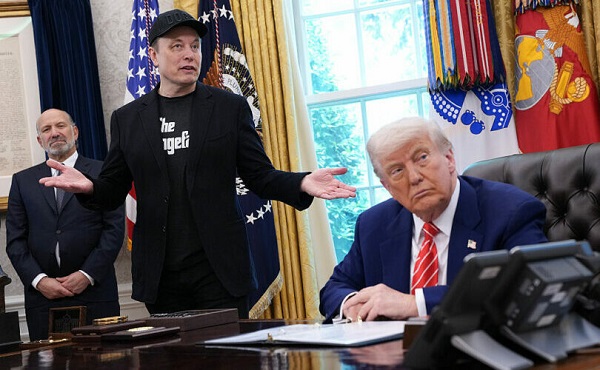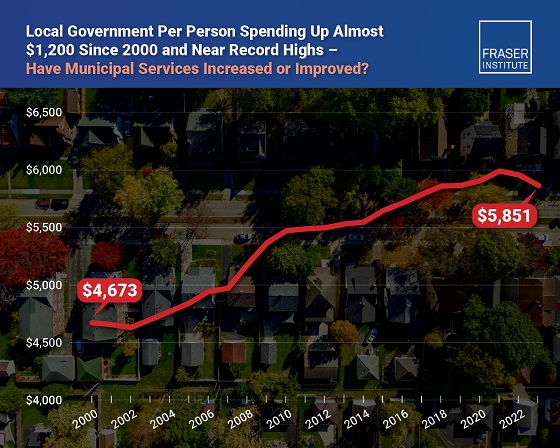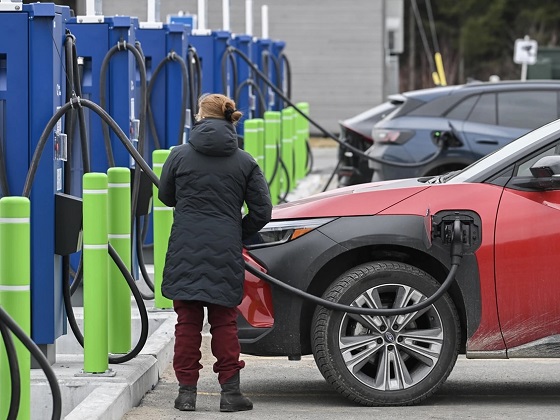Business
Global Affairs Canada Foreign Aid: An Update

Canadian Taxpayers are funding programs in foreign countries with little effect
Back in early November I reached out to Global Affairs Canada (GAC) for a response to questions I later posed in my What Happens When Ministries Go Rogue post. You might recall how GAC has contributed billions of dollars to the Global Fund to Fight AIDS, Tuberculosis and Malaria, only to badly miss their stated program objectives. Here, for the record, is my original email:
I’m doing research into GAC program spending and I’m having trouble tracking down information. For instance, your Project Browser tool tells me that, between 2008 and 2022, Canada committed $3.065 billion to the Global Fund to Fight AIDS, Tuberculosis and Malaria. The tool includes very specific outcomes (like a drop of at least 40 per cent in malaria mortality rates). Unfortunately, according to reliable public health data, none of the targets were even close to being achieved – especially in the years since 2015.
Similarly, Canada’s $125 million of funding to the World Food Programme between 2016 and 2021 to fight hunger in Africa roughly corresponded to a regional rise in malnutrition from 15 to 19.7 percent of the population since 2013.
I’ve been able to find no official documentation that GAC has ever conducted reviews of these programs (and others like it) or that you’ve reconsidered various funding choices in light of such failures. Is there data or information that I’m missing?
Just a few days ago, an official in the Business Intelligence Unit for Global Affairs Canada responded with a detailed email. He first directed me to some slightly dated but comprehensive assessments of the Global Fund, links to related audits and investigations, and a description of the program methodology.
The Audit is a reader-supported publication. To receive new posts and support my work, consider becoming a free or paid subscriber.
To their credit, the MOPAN 2022 Global Fund report identified five areas where important targets were missed, including the rollout of anti-corruption and fraud policies and building resilient and sustainable systems for health. That self-awareness inspires some confidence. And, in general, the assessments were comprehensive and serious.
What initially led me to suggest that GAC was running on autopilot and ignoring the real world impact of their spending was, in part, due to the minimalist structure of the GAC’s primary reporting system (their website). But it turns out that the one-dimensional objectives listed there did not fully reflect the actual program goals.
Nevertheless, none of the documents addressed my core questions:
- Why had the programs failed to meet at least some of their mortality targets?
- Why, after years of such shortfalls, did GAC continue to fully fund the programs?
The methodology document did focus a lot of attention on modelling counterfactuals. In other words, estimating how many people didn’t die due to their interventions. One issue with that is, by definition, counterfactuals are speculative. But the bigger problem is that, given at least some of the actual real-world results, they’re simply wrong.
As I originally wrote:
Our World in Data numbers give us a pretty good picture of how things played out in the real world. Tragically, Malaria killed 562,000 people in 2015 and 627,000 in 2020. That’s a jump of 11.6 percent as opposed to the 40 percent decline that was expected. According to the WHO, there were 1.6 million tuberculosis victims in 2015 against 1.2 million in 2023. That’s a 24.7 percent drop – impressive, but not quite the required 35 per cent.
I couldn’t quickly find the precise HIV data mentioned in the program expectations, but I did see that HIV deaths dropped by 26 percent between 2015 and 2021. So that’s a win.
I’m now inclined to acknowledge that the Global Fund is serious about regularly assessing their work. It wouldn’t be fair to characterize GAC operations as completely blind.
But at the same time, over the course of many years, the actual results haven’t come close to matching the programs objectives. Why has the federal government not shifted the significant funding involved to more effective operations?
The Audit is a reader-supported publication. To receive new posts and support my work, consider becoming a free or paid subscriber.
Alberta
Pierre Poilievre – Per Capita, Hardisty, Alberta Is the Most Important Little Town In Canada

From Pierre Poilievre
Business
Why it’s time to repeal the oil tanker ban on B.C.’s north coast

The Port of Prince Rupert on the north coast of British Columbia. Photo courtesy Prince Rupert Port Authority
From the Canadian Energy Centre
By Will Gibson
Moratorium does little to improve marine safety while sending the wrong message to energy investors
In 2019, Martha Hall Findlay, then-CEO of the Canada West Foundation, penned a strongly worded op-ed in the Globe and Mail calling the federal ban of oil tankers on B.C.’s northern coast “un-Canadian.”
Six years later, her opinion hasn’t changed.
“It was bad legislation and the government should get rid of it,” said Hall Findlay, now director of the University of Calgary’s School of Public Policy.
The moratorium, known as Bill C-48, banned vessels carrying more than 12,500 tonnes of oil from accessing northern B.C. ports.
Targeting products from one sector in one area does little to achieve the goal of overall improved marine transport safety, she said.
“There are risks associated with any kind of transportation with any goods, and not all of them are with oil tankers. All that singling out one part of one coast did was prevent more oil and gas from being produced that could be shipped off that coast,” she said.
Hall Findlay is a former Liberal MP who served as Suncor Energy’s chief sustainability officer before taking on her role at the University of Calgary.
She sees an opportunity to remove the tanker moratorium in light of changing attitudes about resource development across Canada and a new federal government that has publicly committed to delivering nation-building energy projects.
“There’s a greater recognition in large portions of the public across the country, not just Alberta and Saskatchewan, that Canada is too dependent on the United States as the only customer for our energy products,” she said.
“There are better alternatives to C-48, such as setting aside what are called Particularly Sensitive Sea Areas, which have been established in areas such as the Great Barrier Reef and the Galapagos Islands.”
The Business Council of British Columbia, which represents more than 200 companies, post-secondary institutions and industry associations, echoes Hall Findlay’s call for the tanker ban to be repealed.
“Comparable shipments face no such restrictions on the East Coast,” said Denise Mullen, the council’s director of environment, sustainability and Indigenous relations.
“This unfair treatment reinforces Canada’s over-reliance on the U.S. market, where Canadian oil is sold at a discount, by restricting access to Asia-Pacific markets.
“This results in billions in lost government revenues and reduced private investment at a time when our economy can least afford it.”
The ban on tanker traffic specifically in northern B.C. doesn’t make sense given Canada already has strong marine safety regulations in place, Mullen said.
Notably, completion of the Trans Mountain Pipeline expansion in 2024 also doubled marine spill response capacity on Canada’s West Coast. A $170 million investment added new equipment, personnel and response bases in the Salish Sea.
“The [C-48] moratorium adds little real protection while sending a damaging message to global investors,” she said.
“This undermines the confidence needed for long-term investment in critical trade-enabling infrastructure.”
Indigenous Resource Network executive director John Desjarlais senses there’s an openness to revisiting the issue for Indigenous communities.
“Sentiment has changed and evolved in the past six years,” he said.
“There are still concerns and trust that needs to be built. But there’s also a recognition that in addition to environmental impacts, [there are] consequences of not doing it in terms of an economic impact as well as the cascading socio-economic impacts.”
The ban effectively killed the proposed $16-billion Eagle Spirit project, an Indigenous-led pipeline that would have shipped oil from northern Alberta to a tidewater export terminal at Prince Rupert, B.C.
“When you have Indigenous participants who want to advance these projects, the moratorium needs to be revisited,” Desjarlais said.
He notes that in the six years since the tanker ban went into effect, there are growing partnerships between B.C. First Nations and the energy industry, including the Haisla Nation’s Cedar LNG project and the Nisga’a Nation’s Ksi Lisims LNG project.
This has deepened the trust that projects can mitigate risks while providing economic reconciliation and benefits to communities, Dejarlais said.
“Industry has come leaps and bounds in terms of working with First Nations,” he said.
“They are treating the rights of the communities they work with appropriately in terms of project risk and returns.”
Hall Findlay is cautiously optimistic that the tanker ban will be replaced by more appropriate legislation.
“I’m hoping that we see the revival of a federal government that brings pragmatism to governing the country,” she said.
“Repealing C-48 would be a sign of that happening.”
-

 Crime2 days ago
Crime2 days agoNational Health Care Fraud Takedown Results in 324 Defendants Charged in Connection with Over $14.6 Billion in Alleged Fraud
-

 Health2 days ago
Health2 days agoRFK Jr. Unloads Disturbing Vaccine Secrets on Tucker—And Surprises Everyone on Trump
-

 Business1 day ago
Business1 day agoElon Musk slams Trump’s ‘Big Beautiful Bill,’ calls for new political party
-

 Censorship Industrial Complex1 day ago
Censorship Industrial Complex1 day agoGlobal media alliance colluded with foreign nations to crush free speech in America: House report
-

 International22 hours ago
International22 hours agoCBS settles with Trump over doctored 60 Minutes Harris interview
-

 Business15 hours ago
Business15 hours agoLatest shakedown attempt by Canada Post underscores need for privatization
-

 Business15 hours ago
Business15 hours agoWhy it’s time to repeal the oil tanker ban on B.C.’s north coast
-

 Crime12 hours ago
Crime12 hours agoBryan Kohberger avoids death penalty in brutal killing of four Idaho students








